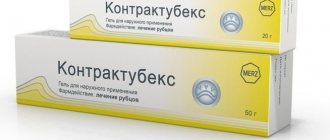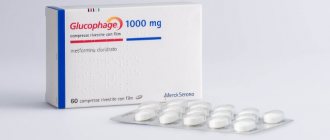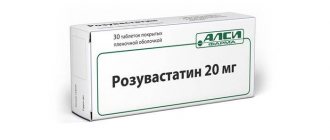How to take Cipralex
The method of administration, dosage and duration of drug therapy with Cipralex should be prescribed by the attending physician, depending on the severity of the patient’s condition, age, weight and gender, the presence of concomitant acute and chronic diseases, and the need to use other pharmacological drugs. In addition, it is necessary to take into account the patient’s predisposition to allergic reactions to medications.
The drug is prescribed once a day, regardless of food intake. For depression, the drug should be taken at a dose of 10 mg. Depending on the patient’s individual response to the drug, its amount is increased to the maximum dose (20 mg per day). The antidepressant effect develops several weeks after the start of drug therapy. To achieve optimal clinical effect, drug treatment with Cipralex should last at least 6 months.
When does Cipralex start working?
The clinical antidepressant effect develops 2-4 weeks after the start of pharmacological therapy with the drug. The maximum effect of treatment for agoraphobia, panic attacks, akathisia syndrome, anxiety, irritability and other emotional disorders is achieved approximately 3-4 months after starting to use the drug.
After the disappearance of manifestations of psychotic pathologies, it is necessary to take the drug for several months (the exact period is determined individually by the attending physician) to consolidate the effect obtained and prevent the development of antidepressant withdrawal syndrome. In some cases, the duration of treatment can be a year or more.
Cipralex withdrawal syndrome
Clinical withdrawal syndrome develops after stopping the use of the drug, due to the fact that the structures of the central nervous system need some time to rebuild the functioning of synapses without constant exogenous maintenance of the concentration of serotonin at a constant active form. It takes one to three weeks to set up the independent functioning of the brain. Antidepressant withdrawal syndrome is manifested by the following symptoms:
- increased nervous excitement;
- insomnia;
- hyponatremia;
- increased tendency to bleed;
- sudden mood swings;
- uncontrollable fear;
- decreased visual acuity;
- dizziness;
- disturbances of consciousness;
- nausea;
- tachycardia;
- heart rhythm disturbances (arrhythmia).
Side effects of the drug
Cipralex has some peculiarities, and in the sensitive area in which it “works”, it is logical to expect more special side effects. In addition to positive therapeutic benefits, it is worth saying a few words about side effects.
Cipralex affects the blood and lymph: a decrease in platelets is observed - thrombocytopenia, which causes hemorrhages in the skin and mucous membranes;
The immune system reacts with reactions such as rashes, itching, hives, angioedema and even anaphylactic shock;
Endocrine system: most often, a deficiency of secreted antidiuretic hormone may develop;
Metabolism - changes in appetite - increase or decrease, weight loss or gain, decrease in sodium concentration in the blood - hyponatremia, anorexia;
Mental reactions - restlessness and anxiety, strange dreams, decreased libido, lack of orgasm, teeth grinding - bruxism, nervous overexcitation, confusion, panic attacks, aggression, depersonalization, hallucinations, obsessions.
In the central nervous system, insomnia or drowsiness, dizziness, tingling, tremors, changes in taste, short-term convulsions and breathing problems, dyskinesia, impaired coordination of movements, akathisia - the need to constantly do something, convulsions may occur.
Organs of vision - dilated pupils, impaired clarity.
Auditory organs - tinnitus.
From the cardiovascular system: tachycardia, a sharp drop in blood pressure when rising from a sitting or lying position.
Digestive system: nausea and vomiting, diarrhea or constipation, dry mouth, hemorrhages in the stomach and intestinal tract.
Liver and bile: hepatitis, liver enzyme imbalance.
Skin and soft tissues: excessive sweating, urticaria, alopecia, rash, itching.
Skeleton and muscle tissue: joint pain or arthralgia, muscle pain - myalgia, increased bone fragility.
Excretory and reproductive systems: urinary retention, impotence, ejaculation disorders, metrorrhagia or uterine bleeding, galactorrhea - milk secretion, priapism - prolonged and painful erection.
Others: general weakness, fever, swelling.
As is the case with other drugs, the instructions for use list all the possible side effects of Cipralex described to date. It is possible that none of them will appear, or the manifestations will be weak and only at the initial stage of treatment. Most often, the drug causes increased anxiety during the first week of treatment, after which the symptom disappears and does not reappear throughout the entire therapeutic course. Most often, complaints come from the gastrointestinal tract and digestion: changes in appetite and weight occur. All other effects appear, as a rule, extremely rarely.
special instructions
Elderly patients are recommended to take half the recommended dosage of the drug. In the presence of mild to moderate renal or hepatic failure, no adjustment of the amount of the drug during treatment is required. When treated with medications containing escitalopram, patients with type 2 diabetes mellitus may experience significant changes in plasma sugar levels, so it is necessary to adjust the doses of insulin and oral hypoglycemic medications.
Patients who take selective serotonin reuptake inhibitors concomitantly with serotonergic medications sometimes develop serotonin syndrome. The presence of symptoms such as agitation, arthralgia, tremor, diarrhea and crawling may indicate the development of a toxic syndrome. In this case, the use of medications should be immediately discontinued and symptomatic treatment prescribed.
Indications for use
- Depression: episodic (acute) and chronic.
- Panic disorders.
- Phobias (fears associated with space, illness and death, social or intimate contacts).
- Anxiety.
- Obsessive-compulsive disorder.
Cipralex during pregnancy
There have been no targeted studies of the safety of this antidepressant during pregnancy, but according to clinical observations, if a woman takes the drug during the third trimester and stops using it shortly before birth, the newborn baby may develop withdrawal syndrome, which is manifested by the following symptoms:
- respiratory depression;
- cyanosis;
- respiratory failure;
- convulsions;
- delayed intellectual development;
- hives;
- muscle hypertonicity;
- diathesis;
- jumps in body temperature;
- vomit;
- belching;
- low blood glucose levels (hypoglycemia)
Contraindications
Pharmacological treatment with Cipralex should be abandoned if:
- hypersensitivity or intolerance to the constituent components of the drug;
- childhood and adolescence (the therapeutic course is not recommended for those under 18 years of age);
- simultaneous treatment with monoamine oxidase (antidepressants) or p imozide (antipsychotic medications);
- acute or chronic renal failure with creatine clearance below 30 ml/min;
- epilepsy , which is not controlled by pharmacological agents.
Cipralex should only be taken under the supervision of qualified medical personnel in one of the following situations:
- non-insulin-dependent diabetes mellitus (for type I, consultation with an endocrinologist is required);
- elderly age;
- cirrhosis , acute or chronic liver failure ;
- tendency to frequent hemorrhages due to insufficiency of the blood coagulation system;
- hereditary and acquired metabolic diseases .
Cipralex and alcohol
The drug and alcohol-containing drinks are incompatible with each other, because the drug is aimed at eliminating depressive conditions, and alcohol, on the contrary, is a factor that enhances or provokes the development of mental attacks. If they are taken simultaneously, the result of such interaction is unpredictable, even fatal. After discontinuation of the drug, strong alcoholic drinks are contraindicated in any quantity.
- Almonds - benefits and harm for women and men
- Simple cut tunic pattern
- What is the difference between menstruation and bleeding?
Is it possible to drink alcohol during treatment, the effect on the ability to drive vehicles
We already know about some of the drug's effects; Cipralex does not change intellectual abilities, but can significantly impair vision and concentration, affect the ability to assess a situation and the speed of reactions. For this reason, neither driving nor working with heavy machinery and complex equipment is possible during therapy.
As for alcohol, medicine and alcoholic drinks are categorically incompatible.
The drug Cipralex is taken to eliminate depression, and ethyl alcohol provokes or intensifies depressive states and critical episodes. In a nutshell: drinking alcohol and using Cipralex affects the brain in opposite directions. If you ignore this reality and take pills and alcohol, the results can be fatal.
Drug interactions
When using the drug simultaneously with MAO inhibitors, the risk of serotonin syndrome and serious anaphylactic reactions increases. Combined use with serotonergic drugs (for example, Tramadol, Macrogol and Sumatriptan) can lead to the development of neurological syndrome and bleeding disorders. Concomitant use with medications that lower the threshold for seizure activity increases the risk of developing symptomatic epilepsy.
The antidepressant enhances the effect of Tryptophan, lithium and magnesium preparations, and neuroleptics. Increases the toxicity of drugs containing plant components (St. John's wort, oregano). Enhances the effect of medications that affect blood pressure. Increases the plasma concentration of Desipramine, Omeprazole and Metoprolol several times.
Cipralex and Amitriptyline
The drug is often prescribed in combination with Amitriptyline for the initial period of pharmacological treatment (the first few weeks). Amitriptyline has the ability to reduce the severity of side effects and facilitates entry into therapy. In addition, Amitriptyline reduces the level of anxiety and phobias, which often develop in the first week of treatment with Cipralex.
In addition, these antidepressants can replace each other if one of these drugs is ineffective, because they are representatives from different pharmaceutical groups. In some cases, one-time medications are used to effectively treat severe and long-term depression or panic attacks. This combination can significantly increase the effectiveness of therapy, eliminate all unpleasant symptoms and provide an acceptable quality of life for the patient.
Pharmacokinetics
Eating does not affect the action of the antidepressant, so high concentrations of the drug are observed 3-4 hours after taking the tablets.
The bioavailability of Cipralex is 80%.
Metabolism of the antidepressant occurs in the liver, and the drug is excreted in the urine.
Cipralex has its own characteristics of use in different age groups.
Elderly people tolerate the medicine quite well, but they eliminate it much more slowly; doctors take this feature into account when dosing Cipralex.
Analogs
When using the drug is excluded due to the patient having direct contraindications, the following analogues of this antidepressant are prescribed:
- Fluoxetine. An analogue of Cipralex is prescribed for severe, prolonged clinical depression. A significant disadvantage of Fluosetine is the high incidence of certain side effects - anorexia, disturbances of consciousness.
- Moclobemide. A drug from the group of selective serotonin reuptake inhibitors. Used to treat epilepsy, depression, psychological problems and obsessive-compulsive disorder.
Cipralex price
The cost of this pharmacological agent depends on the degree of quality of purification of its active substances and the form of release. The price of the drug may be influenced by the region and pharmacy in which it is sold. The cost of a medicine can be set unilaterally by the manufacturer. The price of the drug is indicated in the table:
| Release form of the medicine | Name of pharmacy, Moscow | Cost, rubles |
| Tablets, 10 mg, 28 pcs. | Be healthy | 2048 |
| Tablets, 10 mg, 14 pcs. | Kalina Farm | 1030 |
| Tablets, 10 mg, 10 pcs. | Our Pharmaceuticals | 730 |
Compound
The main substance is distributed in accordance with the tablet form of 5,10, 20 mg, so the Cipralex tablet contains: 6.39; 12.77; 25.54 mg escitalopram oxalate.
The drug also consists of preservative and formative elements: hypromelose, macrogol, talc, starch, silicon dioxide, magnesium stearate, etc.
Externally, the antidepressant Cipralex is a white tablet labeled “EK”, “E” and “L”, “E” and “N”.










